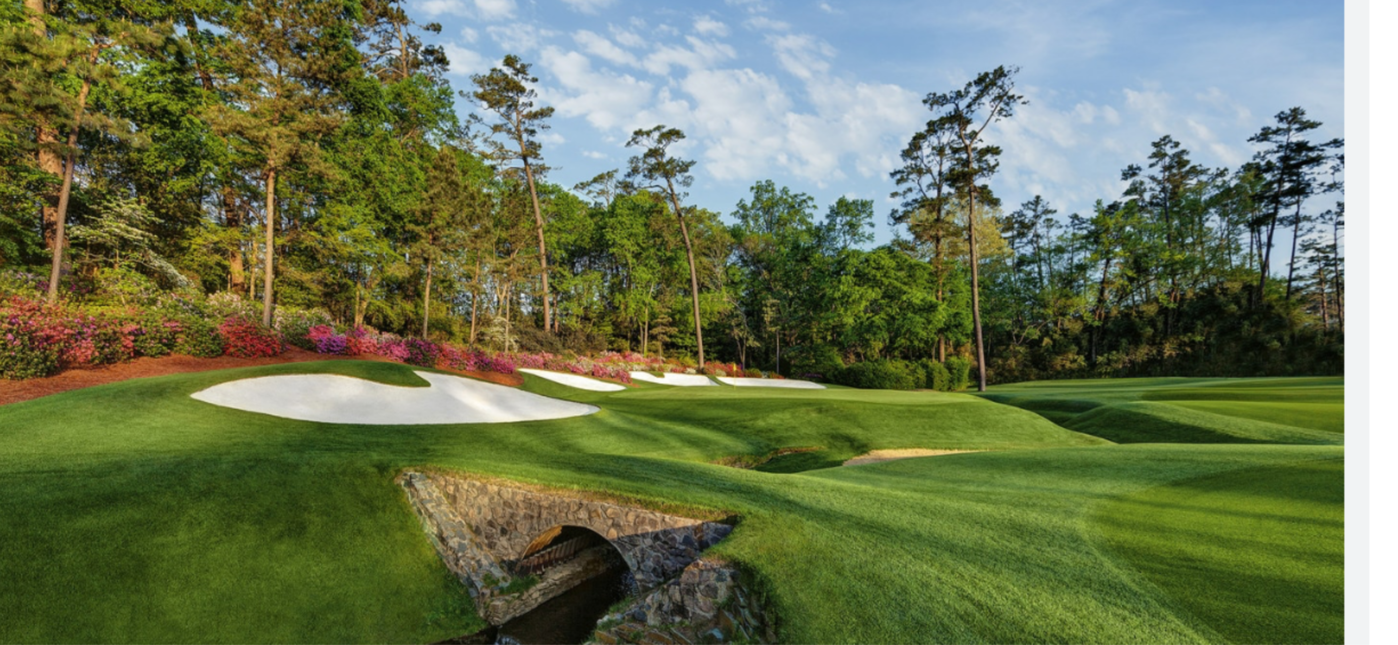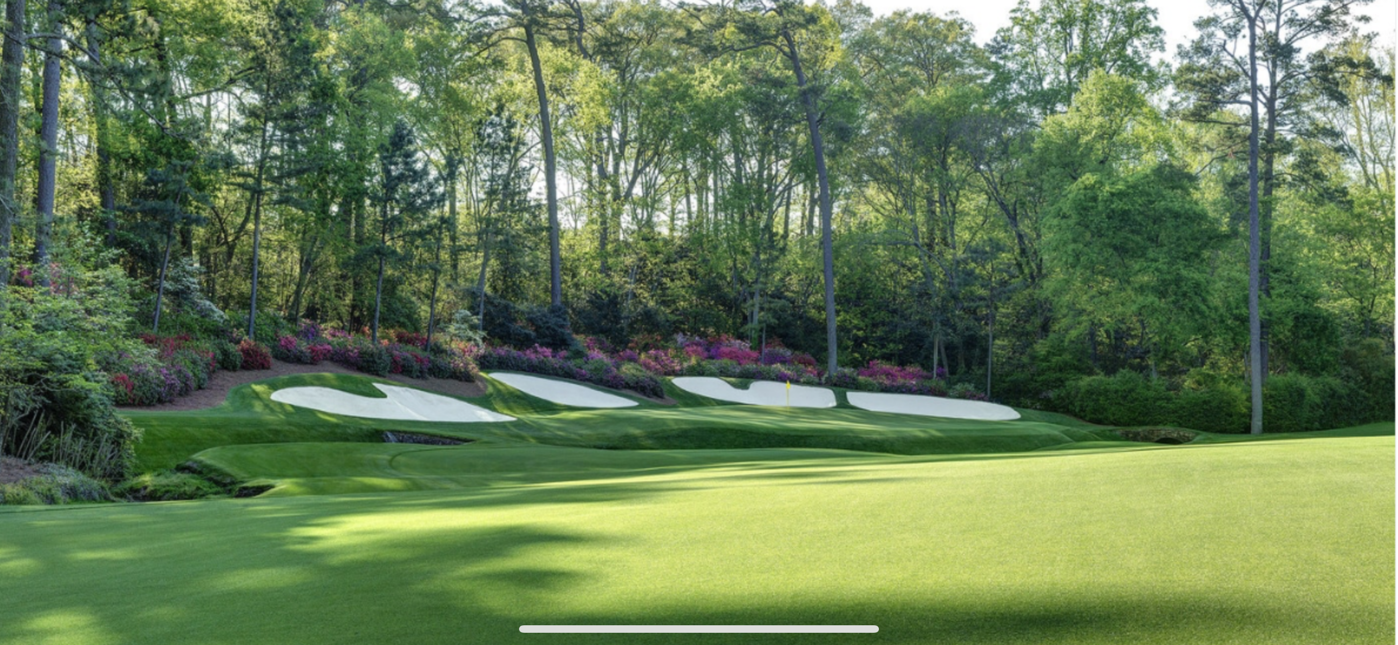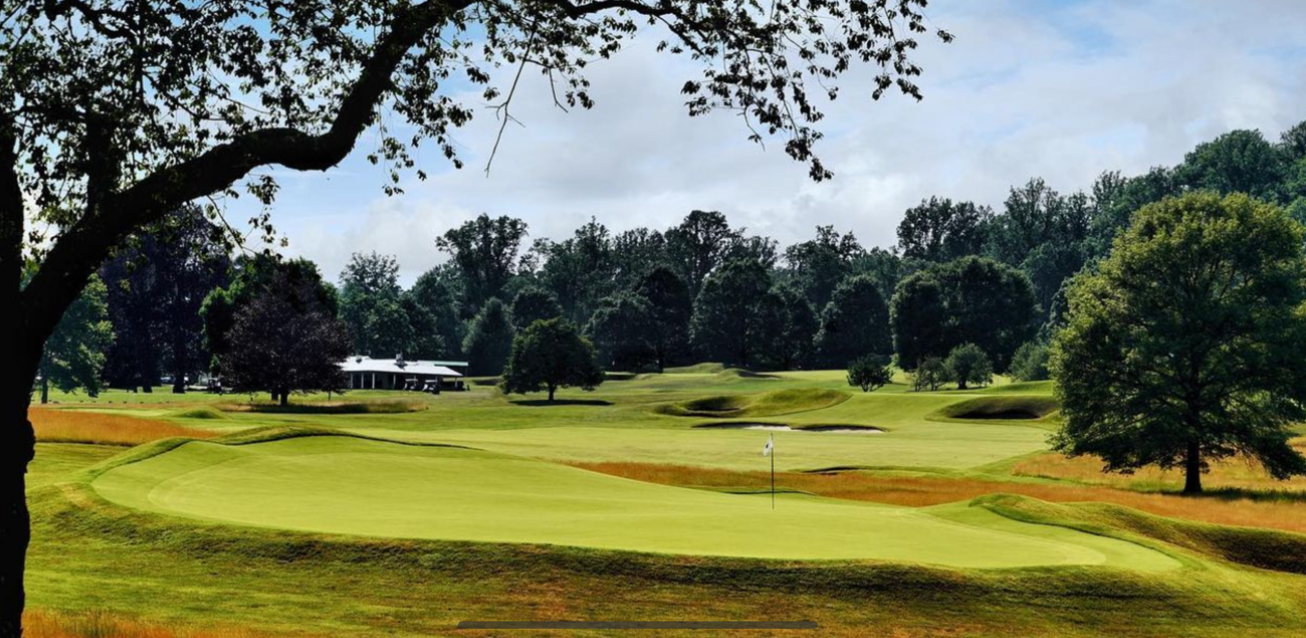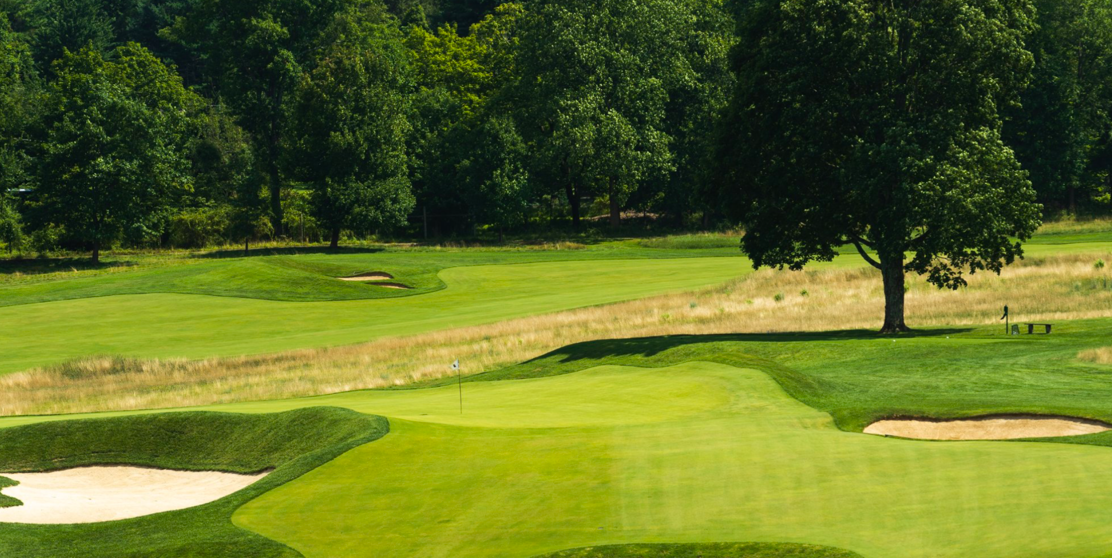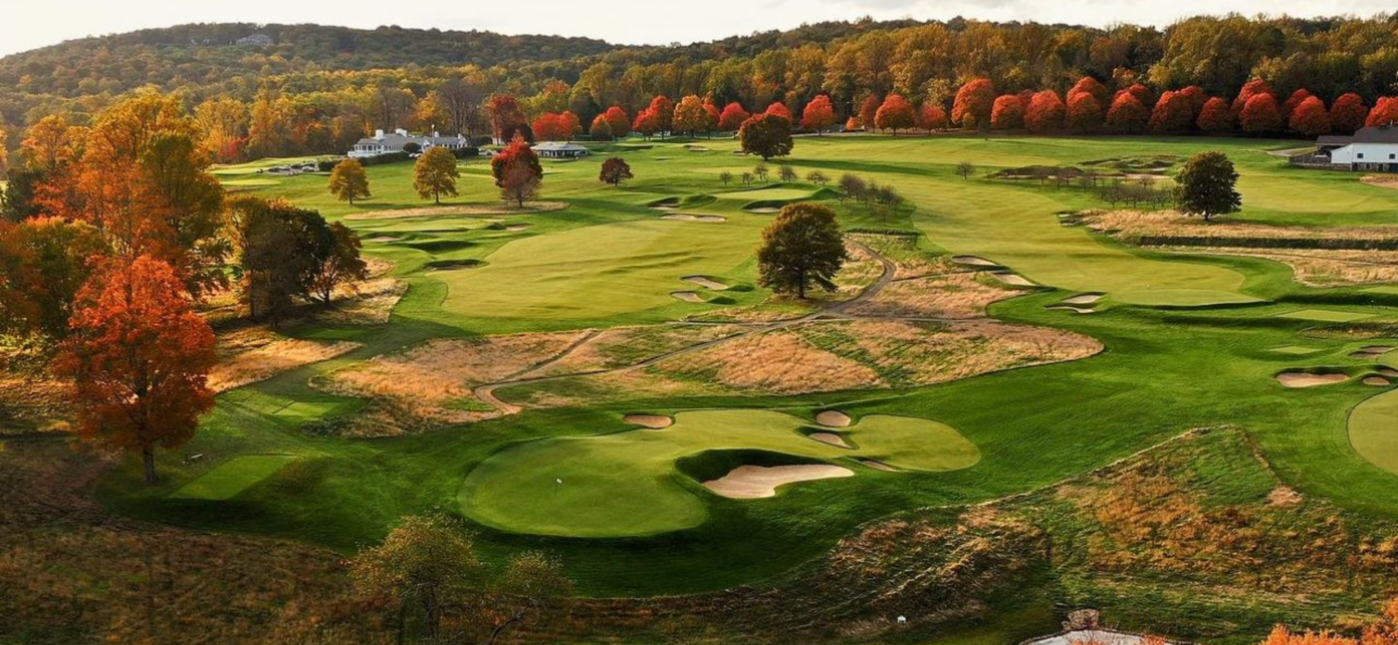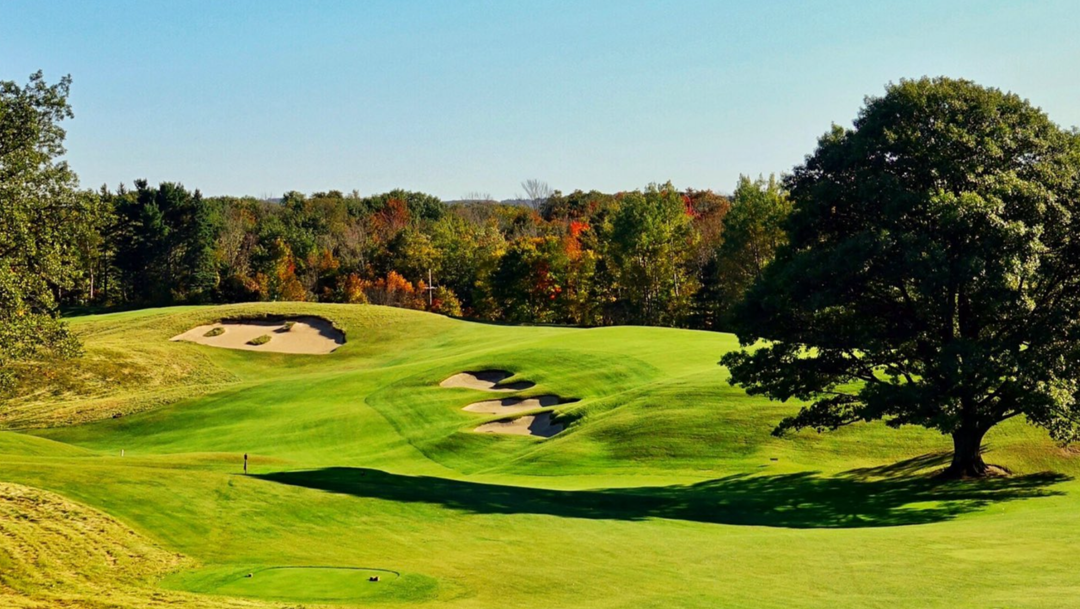
by Gary Williams | May 6, 2024 | Great Golf Holes
Par 4 – 353 yards
Alistair Mackenzie was not prolific like Donald Ross, but he was memorable and Crystal Downs, particularly because of location, has a mythical quality to it. The land between Lake Michigan and Crystal Lake is dramatic and stunning. No hole better summarizes the CD experience more than the 5th. Standing on the tee the features of the hole are staggeringly beautiful. A split fairway bisected by three sisters bunkers that help form almost an optical illusion of what is your desired line of play. The two trees bracket the hole and provide and visual boundary for the player. The lower fairway is more likely to provide a more level lie, but it also will prevent a view of a portion of the green. The spine of the fairway looks like the back of a rhinoceros and a tactical approach is recommended. The green is guarded by several bunkers and slopes back to front and left to right. There are three bunkers that receive less than well struck shots and there is a small ridge at the rear of the green. Upon playing this hole for the first time I told my host they could go on and come get me when the round was over since the study of this hole could be a lifetime.
-
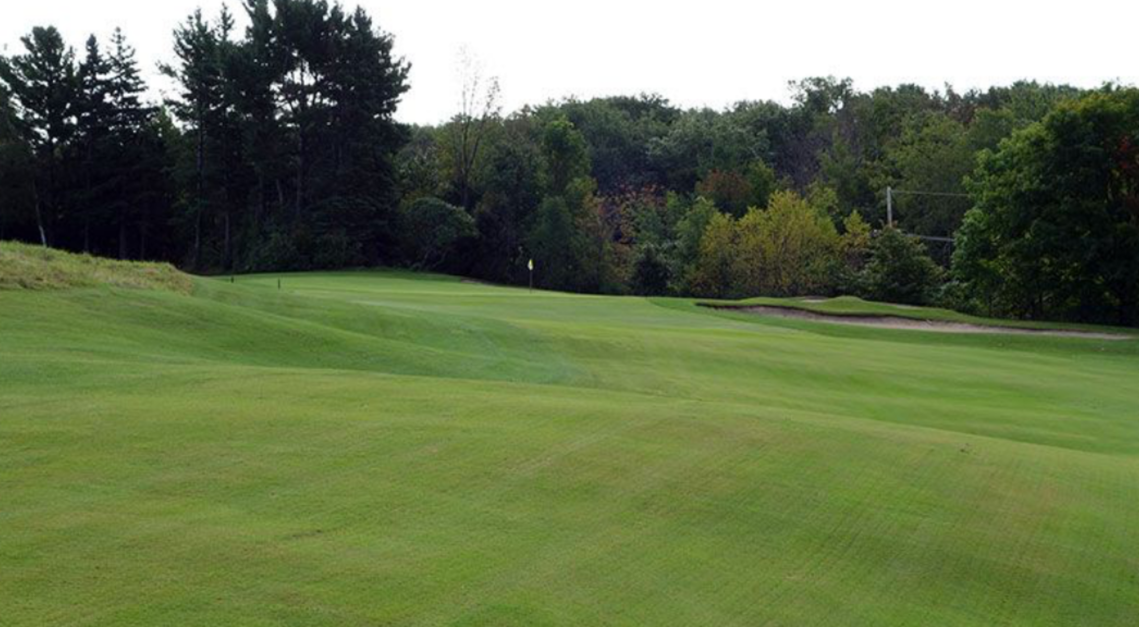
-
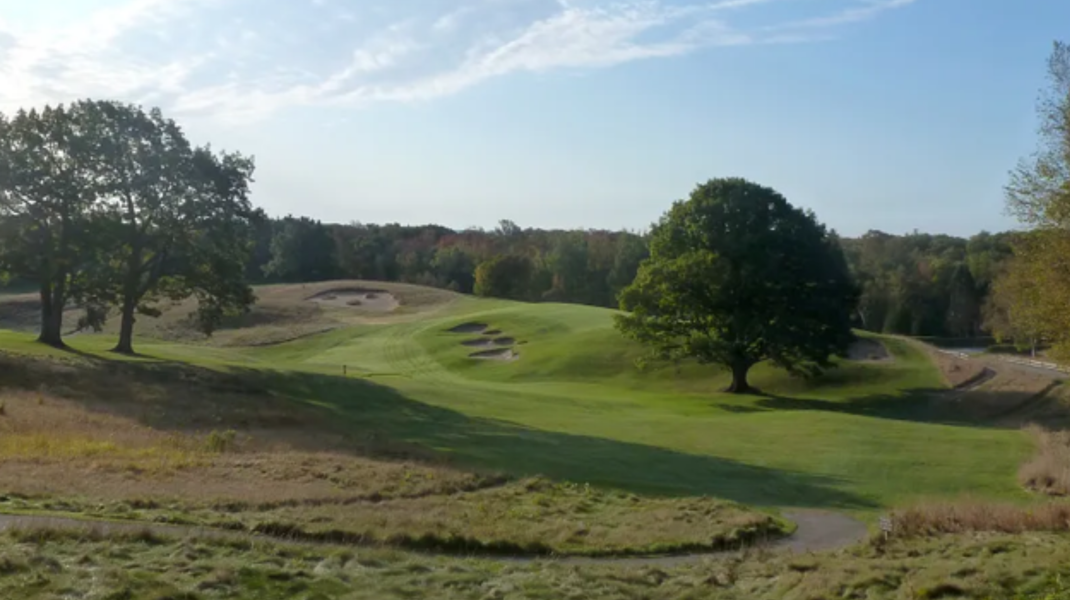

by Gary Williams | Apr 29, 2024 | Great Golf Holes
Par 4 – 397 yards
Picking your favorite hole at Pine Valley is a ridiculous embarrassment of riches to choose from but since my first walk there 40 years ago as a 17-year-old the 11th hole has owned my affections. It was a “found” hole and truly one of the most naturally conceived and constructed holes ever. The land allows for the flow down slightly from tee to fairway and gathering from right to left as well as the return “up” to the putting surface. The look from the tee gives you a completely accurate vision of how the hole moves. It’s also not overly intimidating unlike some of the other holes before and after the 11th. Choices from the tee as the right side is more confining than the left, but the left side runs out with any tee shot even slightly pulled from a right-hander. The green is severely pitched from back to front and is bowl shaped like the valley it sits in. The cross bunker 50 yards short of the green adds thought to any lay-up and the green side bunkers left and right get a lot of action. Nature helped make this, with a minimalist approach, one of the finest holes in the world.
-

-


by Gary Williams | Apr 24, 2024 | Great Golf Holes
Par 4 – 426 yards
The famous church pews are introduced to you on this fabulous par 4 on the left-hand side off the tee and adjacent to your second shot. The boundary of the club property is down the right side, and the scale of Oakmont is truly felt for the first time as holes 4 to 8 flank your view to the left of the 3rd hole. Trusting your line is necessary for the blind second shot to the green that has dramatic run off in the front and rear of the hole. The green does not have an abundance of contour, but the small back subtle shelf is the most menacing pin-able area. Stop and look around from the 3rd green as it’s a high point and a majestic vista of one of the world’s greatest championship courses.

by Gary Williams | Apr 3, 2024 | Great Golf Holes
Par 4 – 350 yards
Flowering Peach
Of all the holes at Augusta National Golf Club, hole #3 is arguably the hole that remains the least changed or altered from its origins. Alistair Mackenzie believed this hole to be as fine a designed hole as any on the golf course. The length of the hole is unchanged from 1934 to present day. The treacherous green complex sits on a plateau with tilt from high right to low left. Players have been more inclined to hit their tee shots well past the cluster of bunkers that flank the left side of the fairway. Clifford Roberts, the club chairman, in 1933 suggested a deep cross bunker in the face of the plateau in front of the green and the idea was shot down by Mackenzie and supported by Jones. The ideal angle is to play from the left side and low area of the fairway and UP to the green with a short wedge. The green is so exacting regardless of which quadrant you are playing to and balls with too much spin can retreat all the way back down the steep slope fronting the green, and balls propelled over the green leave the player with a very stressful chip to a green running away from you. Although early in the round, this is a truly special golf hole and volatility is quite possible despite its short length.
-

-


by Gary Williams | Mar 27, 2024 | Great Golf Holes
Par 5 – 545 yards
In major championship golf history, there are few holes more famous than the 13th at Augusta National. Alistair Mackenzie and Bob Jones used the lowest point on the golf course for their most brilliantly designed hole. They utilize the tributary to Rae’s Creek that meanders all the way down the left-hand side of the hole before it cuts across in front of the green on a diagonal. The fairway sweeps consistently from right to left through the turning point and the slope of the fairway effects the execution of many shots because of the uneven lies. The fairway is very generous for a lay-up, but again you could be faced with a lie above your feet or down. The swale beyond the green leaves a treacherous pitch back on to a green running away from you towards Rae’s Creek. Even with the new tournament tee as of 2023 measuring 545 yards, for the best players in the world it is still a half par hole of 4 1/2 and embodies risk and reward as much as any hole played in major championship conditions.

by Gary Williams | Mar 13, 2024 | Great Golf Holes
Par 3 – 205 yards
“Redan” comes from the French derived term, “fortress defense”. The Redan design concept has been employed around the world on some of the finest courses beginning with the 15th at North Berwick in Scotland. A.W. Tillinghast’s version at Somerset Hills is unquestionably one of the most sublime creations of this template. The rolling land at Somerset Hills and the regal yet understated facilities at Somerset make it a special experience. Like the Redan at Fishers Island, you encounter it on the 2nd hole of the golf course. Somerset Hills’ Redan is a pronounced application of the green descending from front right to back left on the green complex. The steepness of the green is dramatic as is the bunker that guards the left-hand side of the green. Most of the green surface is hidden from the tee and the hole also includes three bunkers that bisect at the bottom of the hole well short of the front of the green. There is also one bunker recessed from the right front of the green that appears closer to the collar from the tee. Somerset Hills is one of Tillinghast’s greatest design triumphs and the Redan is an exclamation point on a superior golf course. If you make it there, pause on the 8th green to look back toward the 2nd, because it gives you an even greater appreciation of the steepness, contour and drama off the Redan green. It’s one of the very best holes in the world.















